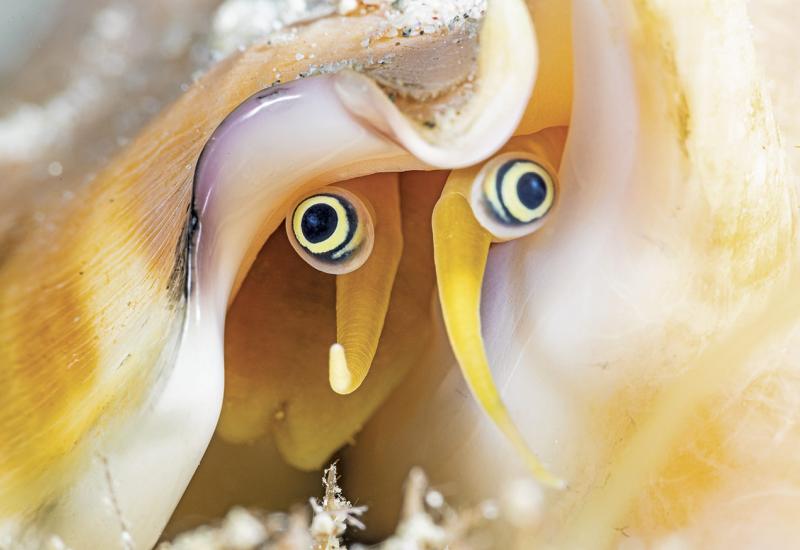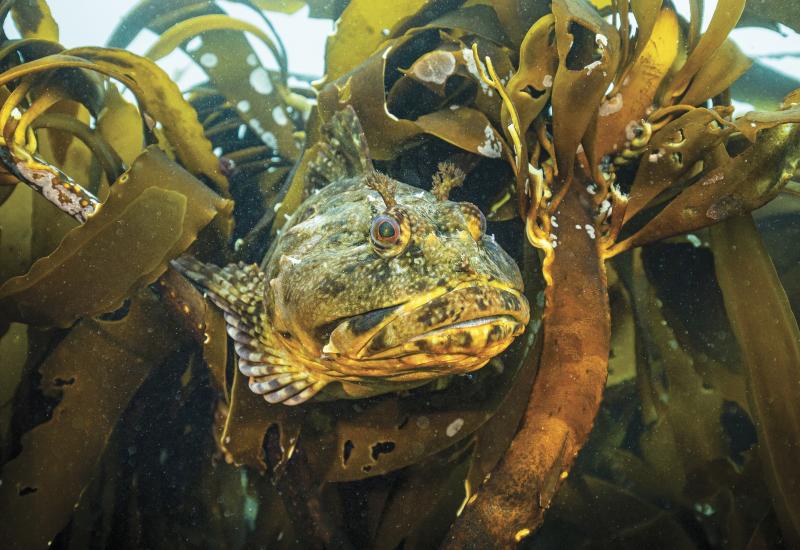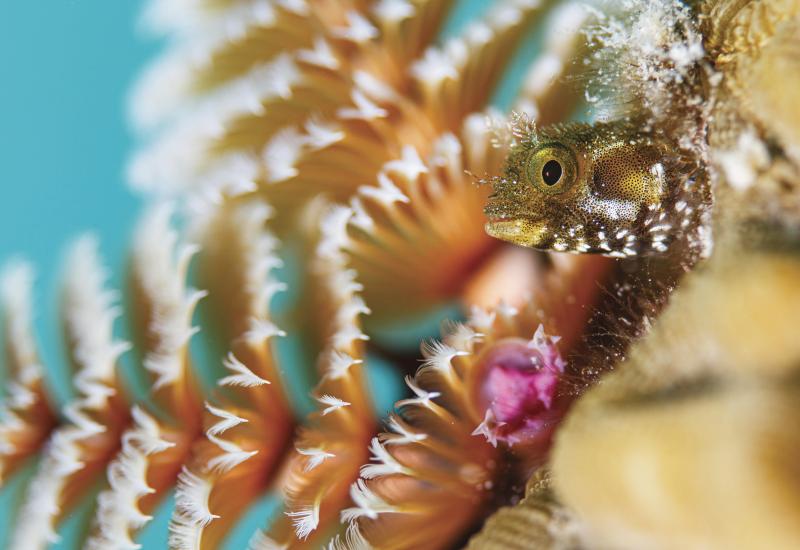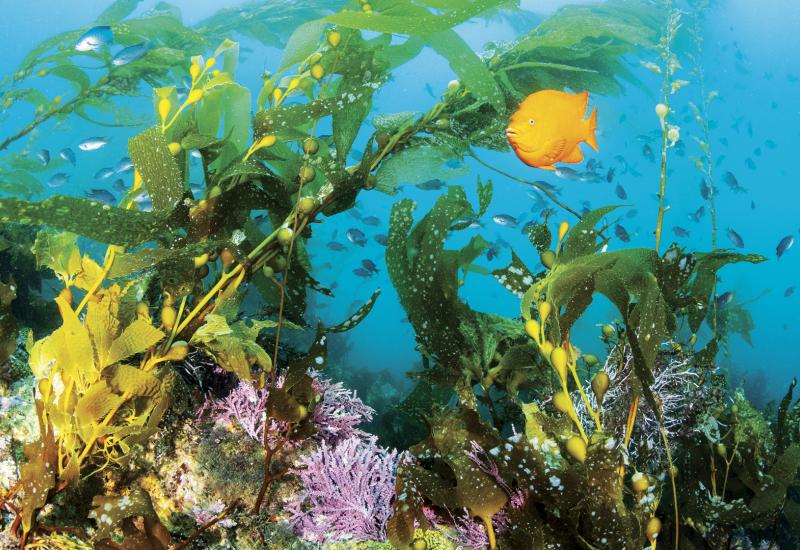How To Position Strobes: Tips for Underwater Photographers

Below are our best tips for strobe placement when shooting underwater pictures.
Jim Decker
One of the most frequent underwater photography questions I hear is, “Where do I put my strobes?” While there is no single solution that works for every situation — and rules are meant to be broken — here are some tips that will help you get the light in the right direction.
1. Get Close Try to stay within a few feet of your subject to get the most light, contrast and color from your strobes. Even at five feet away, your contrast and color will start to drop, even in the best visibility.
2. One Strobe or Two? For macro shooters, you can get away with a single strobe. Adding a second strobe will allow you to fill shadows created by the primary. For wide-angle photography, a pair of strobes is recommended. Dealing with shadows and a wide coverage area is much easier to accomplish with two strobes.
3. Keep ’em Up Natural light comes from above. Light from below is unnatural, which is why telling ghost stories with a flashlight under your chin is spooky. Keep your strobes above the level of your camera lens to avoid spooky lighting.
Wide-Angle Shooting This is more difficult, as strobe placement becomes more critical the wider you go with your lens. As a general rule, keep your strobes pointed forward, not inward, and have about the same distance from the strobe to the housing as you have from the lens to the subject. This avoids lighting up the tiny particles in the water — backscatter— by creating a “dark zone” between the camera and the lens.
Macro Shooting Strobes have an angle of about 90 degrees or more; your subjects will be at 30 degrees or less. Like the scattered shot of a shotgun, you can aim strobes in the general direction and still hit the target. Strobes will be placed close to the camera, facing forward. With a single strobe, place it on top. With a pair, I like to have one on top of the camera and one on the side, allowing me to switch to a vertical composition, and still have one on the top and one on the side.
8 Easy Tips for Lighting It Right
1. Always keep your strobes pointed forward, not inward.
2. As you get closer to a subject, bring the strobes closer to the housing. (above, left)
3. As you get farther away, push them out wider. (above, right)
4. If you see backscatter while reviewing your image, push the strobes out wider for your next shot.
5. Reposition your strobe if it is lighting an ugly area of the reef.
6. If one strobe is significantly closer than the other, turn down the intensity of the closer strobe to avoid blowing out the exposure.
7. For wide-angle vertical shots, try turning off one strobe and just use the one on top.
8. For wide-angle shots with a wall on one side, position one strobe on top and another on the blue-water side.
Underwater photographer and videographer Jim Decker is the CEO of Backscatter Underwater Video and Photo. In each Imaging Plus column, he tackles practical problems in underwater photography and videography.
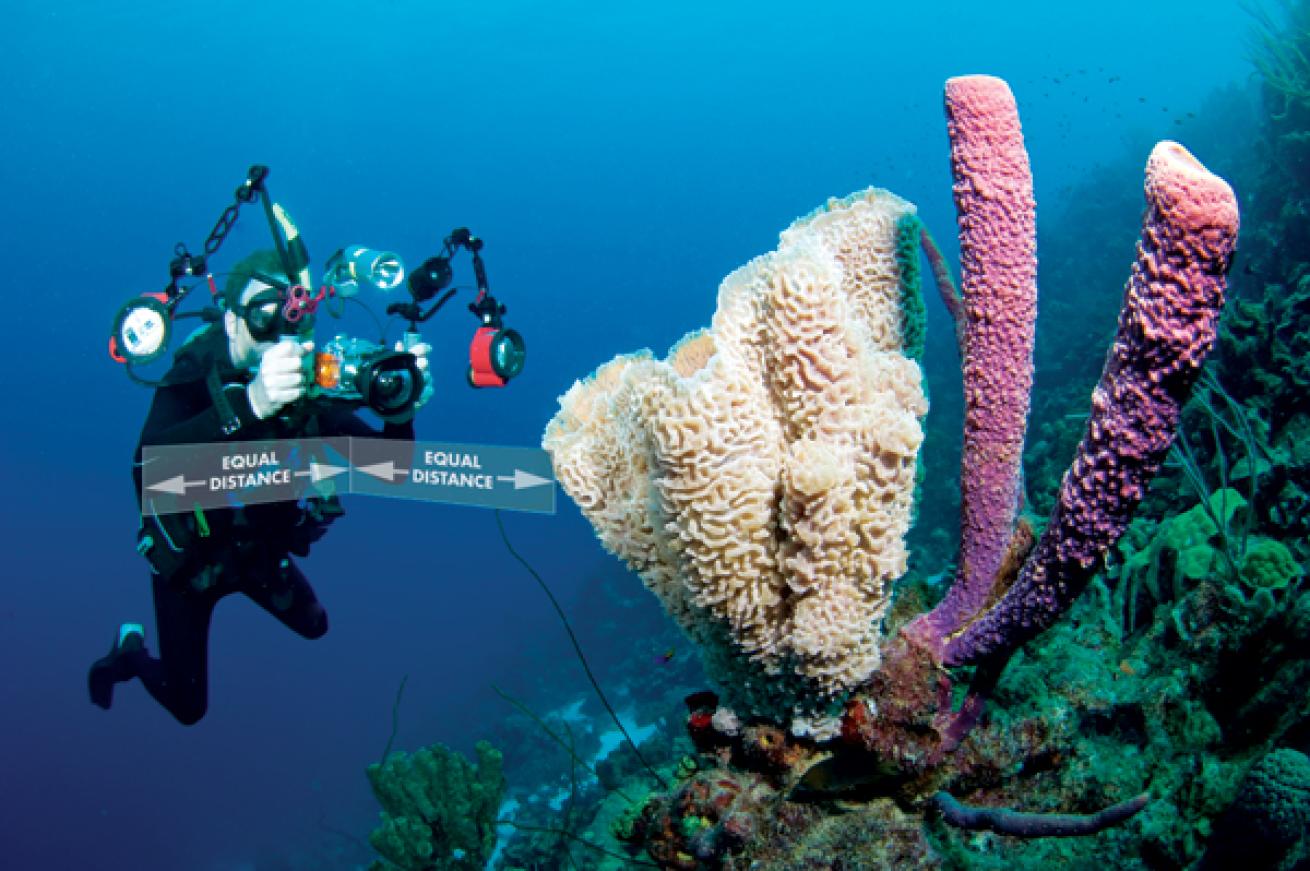
Jim DeckerBelow are our best tips for strobe placement when shooting underwater pictures.
One of the most frequent underwater photography questions I hear is, “Where do I put my strobes?” While there is no single solution that works for every situation — and rules are meant to be broken — here are some tips that will help you get the light in the right direction.
1. Get Close Try to stay within a few feet of your subject to get the most light, contrast and color from your strobes. Even at five feet away, your contrast and color will start to drop, even in the best visibility.
2. One Strobe or Two? For macro shooters, you can get away with a single strobe. Adding a second strobe will allow you to fill shadows created by the primary. For wide-angle photography, a pair of strobes is recommended. Dealing with shadows and a wide coverage area is much easier to accomplish with two strobes.
3. Keep ’em Up Natural light comes from above. Light from below is unnatural, which is why telling ghost stories with a flashlight under your chin is spooky. Keep your strobes above the level of your camera lens to avoid spooky lighting.
Wide-Angle Shooting This is more difficult, as strobe placement becomes more critical the wider you go with your lens. As a general rule, keep your strobes pointed forward, not inward, and have about the same distance from the strobe to the housing as you have from the lens to the subject. This avoids lighting up the tiny particles in the water — backscatter— by creating a “dark zone” between the camera and the lens.
Macro Shooting Strobes have an angle of about 90 degrees or more; your subjects will be at 30 degrees or less. Like the scattered shot of a shotgun, you can aim strobes in the general direction and still hit the target. Strobes will be placed close to the camera, facing forward. With a single strobe, place it on top. With a pair, I like to have one on top of the camera and one on the side, allowing me to switch to a vertical composition, and still have one on the top and one on the side.
8 Easy Tips for Lighting It Right
1. Always keep your strobes pointed forward, not inward.
2. As you get closer to a subject, bring the strobes closer to the housing. (above, left)
3. As you get farther away, push them out wider. (above, right)
4. If you see backscatter while reviewing your image, push the strobes out wider for your next shot.
5. Reposition your strobe if it is lighting an ugly area of the reef.
6. If one strobe is significantly closer than the other, turn down the intensity of the closer strobe to avoid blowing out the exposure.
7. For wide-angle vertical shots, try turning off one strobe and just use the one on top.
8. For wide-angle shots with a wall on one side, position one strobe on top and another on the blue-water side.
Underwater photographer and videographer Jim Decker is the CEO of Backscatter Underwater Video and Photo. In each Imaging Plus column, he tackles practical problems in underwater photography and videography.

